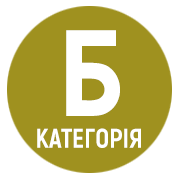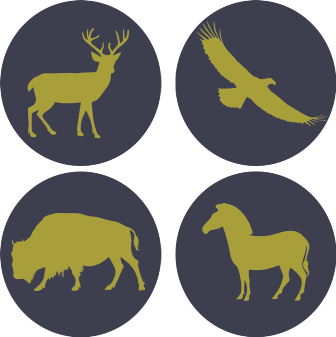THE LOCUST OUTBREAK IN THE REGION OF THE "ASKANIA NOVA" BIOSPHERE RESERVE AND FACTORS OF ITS STRENGTHENING
DOI:
https://doi.org/10.53904/1682-2374/2025-27/3Keywords:
італійський прус, сарана перелітна, фактори регуляції, посуха, воєнні діїAbstract
An analysis for the area of the Biosphere Reserve "Askania Nova" and its surrounding region of the locust outbreaks, capable of mass reproduction and the formation of a migratory form, are carried out. The most common species in the territory of the reserve is the Italian locust (Calliptamus italicus L.,1758), and in the region closer to the Dnieper River, the migratory locust (Locusta migratoria L.,1758). On the background of climatic conditions, favorable for the survival of eggs, the development of nymphs and adults of locusts during 2023–2025, the current outbreak of the Italian locust and other species of locusts differs from previous ones by the complicated situation arose as a result of the Russian-Ukrainian war: the drainage of the region due to the destruction of the Kakhovka reservoir dam by Russian troops, the disappearance of bird colonies, steppe fires affected the soil-litter zoophagous complex, as well as the violation of the established system of soil cultivation in the buffer and anthropogenic landscape zones, contributed to the locust population getting out of the control by natural factors. In the protected steppe zone, the main regulators of the locusts number are parasitic Hymenoptera – Sphex sp., predatory beetles (Carabus sp.), Staphylinidae (Staphylinidae), beetles of the genus Mylabris sp. (family Meloidae), as well as large orb-weaver spiders (Argiope sp.), ants Lasius sp., amphibians Bufo sp., reptiles Vipera sp., Lacerta sp., and a complex of insectivorous birds. In the pasture variant, the main factor was huge flocks of the common crane (Grus grus L., 1758), the Mediterranean gull (Larus melanocephalus Temminck, 1820), the slender-billed gull (L. genei Breme, 1840), and the ruff (Philomachus pugnax L., 1758). Within the Biosphere Reserve and its surrounding region, in the coming years, outbreaks of Italian and migratory locusts are possible due to the presence of natural and anthropogenic factors, which have the inertia of the succession process and could not disappear within one or two seasons.
References
Ладичук Д.О., Шапоринська Н.М. (2021). Шляхи вирішення проблеми втрат водних та земельних ресурсів Херсонської області. Досягнення України та ЄС в екології, біології, хімії, географії та аграрних науках : Колективна монографія. Рига: Baltija Publishing, с. 264–281. https://doi.org/10.30525/978-9934-26-086-5-26
Опоков Е. (1926–27). Про штучне зрошення та його перспективи в Асканії-Новій на Мелітопільщині. Вісті Науково-Дослідчого Інституту Водного Господарства України, 1: 146–149.
Проєкт організації території Біосферного заповідника "Асканія-Нова" імені Ф.Е. Фальц-Фейна та охорони природних комплексів. Затверджено наказом Міністерства захисту довкілля та природних ресурсів України 11 травня 2022 року № 194. https://mepr.gov.ua/nakaz-mindovkillya-194-vid-11-05-2022/
Федоренко В., Гавриленко В., Думенко В. (2003). Чи є сарана в заповідному степу. Пропозиція, №10: 74–75.
Babych, A.D. (1960). The steppe oasis "Askania Nova". Kharkiv: Publishing House of Kharkiv A.M. Gorky State University, pp. 156–185. [in Russian].
Havrylenko, V.S., & Dumenko, V.P. (2003). On the causes of the population outbreak of the Italian locust (Calliptamus italicus L.) in the region of the "Askania Nova" Biosphere Reserve. Biosphere Reserve "Askania Nova" Reports, 5: 154–159. [in Russian].
Havrylenko, V.S., Lystopadskyi, M.A., & Mezinov, A.S. (2012). Phenology, population dynamics, and behavioral patterns of crane in the "Askania Nova" Biosphere Reserve. Branta, 15: 46–56. [in Russian].
Hreben, L.K. (1928). History of sheep breeding in Askania. Bulletin of the Zootechnical Experimental and Breeding Station in the State Reserve "Chapli" (formerly Askania Nova), №4. Moscow: Novaya Derevnya, рр. 16–65. [in Russian].
Khomenko, V.N., Petrusenko, A.A., & Zhezherin, Y.V. (1988). Composition of the soil and litter mesofauna of the Askania pristine steppe. Kyiv: Institute of Zoology, Academy of Sciences of the Ukrainian SSR, 56 pp. [in Russian].
Medvedev, S. (1928). Entomofauna of the Askania pristine steppe. In: The steppe reserve Chapli – Askania Nova. Moscow–Leningrad: State Publishing House, pp. 195–209. [in Russian].
Medvedev, S.І. (1929). Materials on Orthoptera (grasshoppers) of "Askania Nova" and its surroundings. Proceedings of the State Steppe Reserve "Chapli" (former "Askania Nova"), 7: 29–46. [in Russian].
Medvedev, S.І. (1930). Preliminary data on agricultural pests in the State Reserve "Chapli". Bulletin of the Phytotechnical Station, 1. Melitopol, рр. 73–78. [in Russian].
Teetzmann, F. (1845). Ueber die Sudrussischen Steppen und uber die darin im Taurischen Gouvernement belegen Beisitzungen des Herzogs von Anhalt-Kothen. Beitrage zur Kenntniss des Russischen Reiches und der angranzenden Lander Asiens. St. Petersburg: Akademie der Wissenschaften, s. 89–135.
Ushachova, T.I., Yankov, L.I., & Gerasimenko, S.V. (2003). The history of cultivation at the territory of the "Askania Nova" Biosphere Reserve. Biosphere Reserve "Askania Nova" Reports, 5: 113–120. [in Russian].






